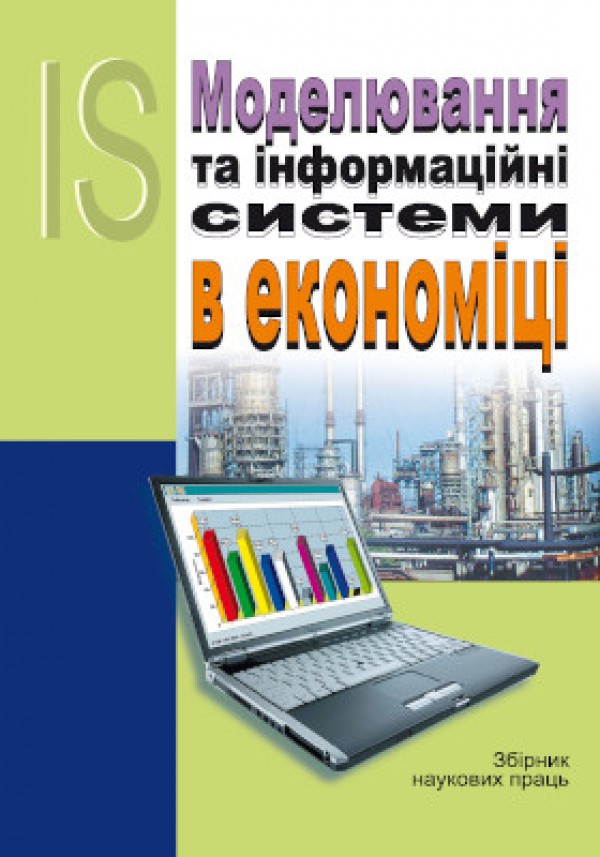
Modeling and Information System in Economics
ISSN 2708-9746
Модель проєктного офісу в системі управління організацією
Project office model in the corporate it management system
DOI:
10.33111/mise.102.10
Анотація: Питання проектного менеджменту останнім часом викликає значну увагу як науковців, так і практиків, що обумовлене набуттям ознак проекту більшості видів економічної діяльності та пошуком шляхів підвищення ефективності. Метою статті є аналіз існуючих підходів до створення ОУП, їх типів та моделей на сучасному етапі розвитку проектного менеджменту в умовах диджиталізації й посилення впливу інформаційних технологій і систем управління ІТ на прийняття рішень щодо стратегії розвитку організації, а також визначення того, до яких нових викликів слід готуватися проектним офісам у майбутньому. Проаналізовано концепцію розвитку офісу управління проектами (ОУП) і розглянуто найбільш поширені організаційні моделі ОУП. Також досліджено міжнародні стандарти управління проектами, а саме — серія ISO 21500, а також стандарти де-факто PMBOK, PRINCE2, P2M та ін. Визначено та з’ясовано основні тренди розвитку ОУП та виклики, з якими стикаються організації в умовах цифрової революції та цифровізації. Встановлено основні сучасні еволюційні ознаки ОУП та розглянуто їх різновиди, напрями подальшого розвитку та перехід до моделі трансформації. Наведено ключові фактори щодо вибору моделі PMO, яка найкраще відповідатиме бізнес-стратегії та дозволить компанії отримати максимальну вигоду. З метою систематизації та поглиблення розуміння місця проектного офісу в системі управління організацією проведено їх класифікацію.
Abstract: The issue of project management has recently attracted considerable attention of both scientists and practitioners, which is due to the acquisition of project features of most types of economic activity and the search for ways to increase efficiency. The purpose of the article is to analyze the existing approaches to the creation of the PMU, their types and models at the current stage of the development of project management in the conditions of digitalization and the strengthening of the influence of information technologies and IT management systems on decisionmaking regarding the organization’s development strategy, as well as to determine what new challenges should be faced to prepare for project offices in the future. The article analyzes project management office (PMO) development concept and considers the most common PMO organizational models. Project management international standards, i.e., the ISO 21500 series, as well as the de facto standards of PMBOK, PRINCE2, P2M, etc. were analyzed too. The main PMO development trends and the challenges faced by organizations in the conditions of the digital revolution and digitization have been identified and clarified. The key modern evolved PMO features are defined and their varieties, further development directions and the transition to a transformation model are considered. Key factors regarding the choice of the PMO model, which will fit the business strategy best and will allow company to get the maximum benefit, are given. In order to systematize and deepen the understanding of the place of the project office in the management system of the organization, their classification was carried out
Ключові слова: управління проектами, офіс управління проектами, управління портфелем, модель проектного офісу, види проектних офісів, трансформація проектного офісу
Key words: project management, project management office, portfolio management, project office model, types of project offices, project office transformation.
УДК: 005.8:004
UDC: 005.8:004
To cite paper
In APA style
Lazarieva, S., & Kordunov, S. (2022). Project office model in the corporate it management system. Modeling and Information System in Economics, 102, 115-136. http://doi.org/10.33111/mise.102.10
In MON style
Лазарєва С.Ф., Кордунов С.Ю. Модель проєктного офісу в системі управління організацією. Моделювання та інформаційні системи в економіці. 2022. № 102. С. 115-136. http://doi.org/10.33111/mise.102.10 (дата звернення: 11.04.2025).
With transliteration
Lazarieva, S., Kordunov, S. (2022) Model proiektnoho ofisu v systemi upravlinnia orhanizatsiieiu [Project office model in the corporate it management system]. Modeling and Information System in Economics, no. 102. pp. 115-136. http://doi.org/10.33111/mise.102.10 [in Ukrainian] (accessed 11 Apr 2025).
 # 102 / 2022
# 102 / 2022
Download Paper
80
Views
30
Downloads
0
Cited by
- A Guide to the Project management body of knowledge (PMBOK® guide) — Fifth edition. Newtown Square, Project Management Institute. (2013).
- А Guide to the Project management body of Knowledge (PMBOK guide) Sixth edition Newtown Square, PA: Project Management Institute, 2017.
- А Guide to the Project management body of Knowledge (PMBOK guide) Сьоме видання Newtown Square, PA: Project Management Institute, 2021. 216 с. Переклад укр. із залученням волонтерів та експертів громадського представництва PMI Ukraine та міжнародної служби перекладів «Філін». Спонсор підготовки українського перекладу до публікації Intellias.
- Cartwright, C.&Yinger, M. (2007). Project management competency development framework—second edition. Paper presented at PMI® Global Congress 2007—EMEA, Budapest, Hungary. Newtown Square, PA: Project Management Institute.
- Susan Tuttle. PRINCE2 in Action: Project management in real terms. ITGP (April 12, 2018). 254 p. 136
- Individual Competence Baseline for Project, Programme & Portfolio Management — ICB v.4.2018 р.
- GAPPS (2006) A Framework for Performance Based Competency Standards for Global Level 1 and 2 Project Managers Sydney: Global Alliance for Project Performance Standards, 55 p. URL: https://www.projectmanagement.com/content/attachments/Primus1_2010110 23434.pdf (дата звернення: 26.11.2022)
- Керівництво з управління інноваційними проєктами і програмами організацій: Монографія. Пер. укр. під ред. проф. Ф. О. Ярошенка. Київ: Новий друк, 2010. 160 с.
- ISO 21500:2021. Project, programme and portfolio management — Context and concepts. URL: https://www.iso.org/standard/75704.html (дата звернення 26.11.2022)
- ISO 21502:2020. Project, programme and portfolio management — Guidance on project management.
- URL: http://hmoftakhari.com/userfiles/ISO%2021502/ISO%2021502_2020(en)- %20PQP.pdf (дата звернення 26.11.2022)
- Axelos Limited, Eileen J. Roden. Portfolio, Programme and Project Offices: P3O. TSO, The Stationery Office; Second edition (September 13, 2013). 232 p.
- Giraudo, L. & Monaldi, E. (2015). PMO evolution: from the origin to the future. Paper presented at PMI® Global Congress 2015–EMEA, London, England. Newtown Square, PA: Project Management Institute.
- Christy Pettey (March 28, 2019). 4 Types of Project Management Offices That Deliver Value. URL: https://www.gartner.com/smarterwithgartner/ 4-types-of-project-management-offices-that-deliver-value (дата звернення 28.11.2022)
- Fahrenkrog, S. L., Haeck, W., Abrams, F., & Whelbourn, D. (2003). PMI’s organizational project management maturity model. Paper presented at PMI® Global Congress 2003–North America, Baltimore, MD. Newtown Square, PA: Project Management Institute.
- Seven Key Factors to a Successful PMO Transformation. URL: https://blog.protiviti.com/2020/10/27/seven-key-factors-to-a-successful-pmo-transformation/ (дата звернення 27.11.2022)
- Kendall G., Rollins S. (2003). Advanced Project Portfolio Management and the PMO. Multiplying ROI at Warp Speed. 448 p.

